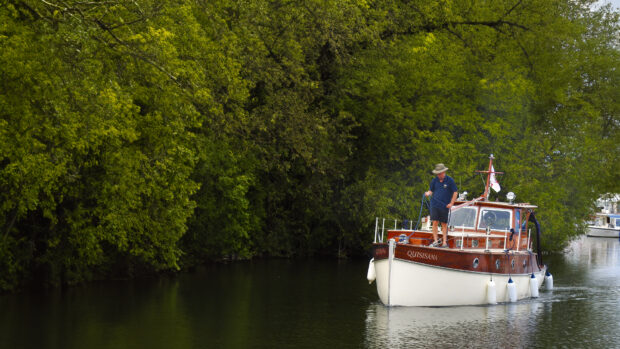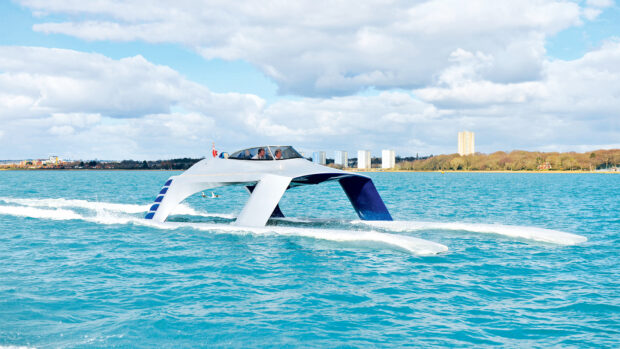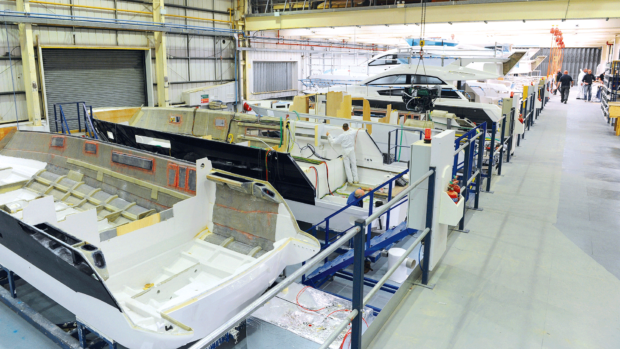A team of talented British race car engineers and boat enthusiasts have developed the world’s first petrol electric hybrid superboat, the Furyan F35.
The trouble with pure electric boats is that when you run out of power there’s no means of getting home. You can’t recharge the batteries at sea, there’s no auxiliary power source and, short of a pair of oars or a tow from a passing boat, you’re on your own.
But what if your battery powered electric boat was also fitted with a small petrol generator that not only extended the range and increased the speed but also acted as a failsafe means of getting home?
Suddenly the idea of buying an electric boat becomes less of a leap of faith and more a natural progression to a cleaner future.
Article continues below…

Greenline 40 hybrid yacht tour: Inside a brand new boat you’ll never need to plug in

This ground-breaking water jet could jump-start the electric boats revolution
This was the train of thought that set race car engineer and motorboat enthusiast John Travis on the road to developing what he hopes will become the world’s first petrol electric superboat.
Having worked in the motorsport industry for over 30 years as well as being the owner of a Grandezza 34 sportscruiser, Travis not only has access to the latest hybrid technology but also a first-hand understanding of what boaters expect from their craft.
In his view, until electric boats not only perform as well as fossil fuelled ones but also guarantee to get you home even when the battery is depleted, they will remain a niche product confined to lakes and rivers.

A Coupe version of the Furyan F35 was revealed recently
His solution gets round this by combining a state of the art electric powertrain with a compact rotary petrol engine that boosts performance and range from the battery pack but also feeds electricity directly to the motors for constant get-you-home cruising at 12 knots. Even if you eventually run out of fuel, it’s simply a matter of topping up from a spare can to get going again.
Called the Furyan F35, Travis’s vision is far more than just a pie in the sky engineering exercise. With the help of his extensive contacts in the motor racing industry, he has put together a team of designers, naval architects and engineers to create a fully engineered, computer tested concept as well as a costed business plan to develop and build it.
The finished boat has an expected top speed limited to 38 knots in twin motor format (a triple motor version is also on the cards) and a cruising range of 58nm at 25 knots.
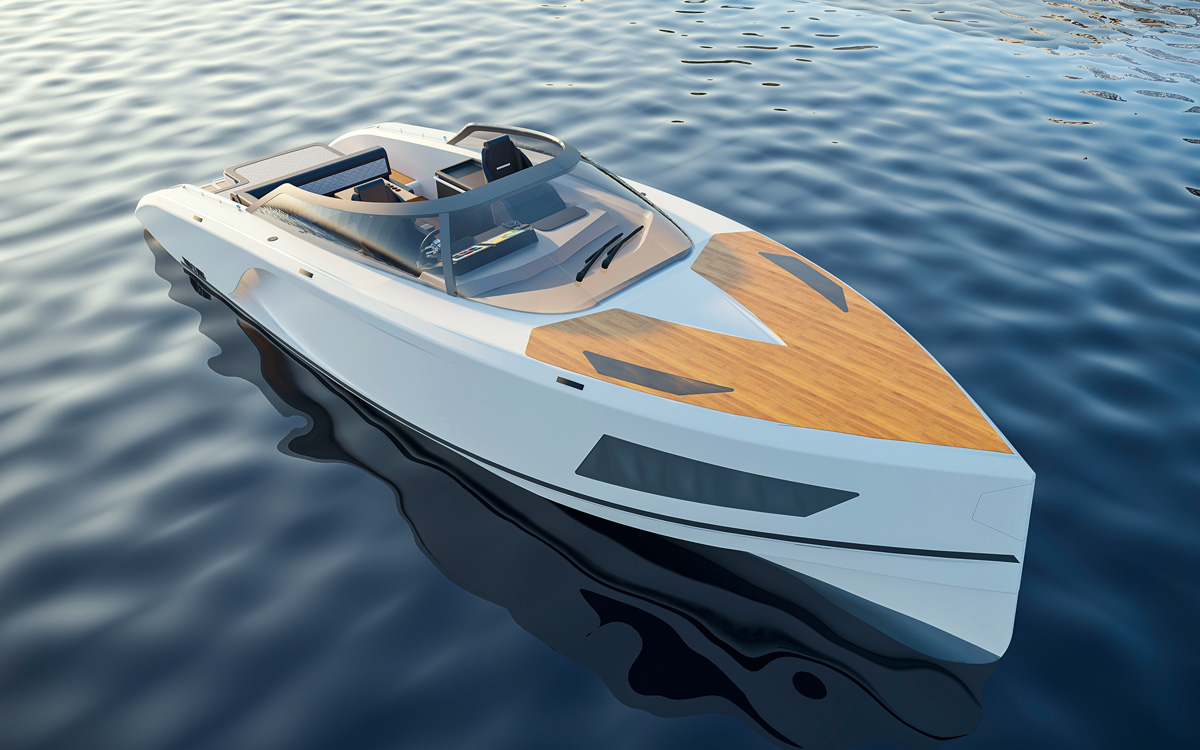
Flax jacket
The starting point is a 35ft planing hull with a wave piercing vertical bow using Swedish firm Petestep’s unusual vee-shaped spray deflectors fanning out from a central keel to increase its cruising efficiency.
First seen and tested by MBY on the HOC 33 and adopted since by a number of yards including Vanquish, X-Power and Fugu performance RIBs, it has been shown to offer improved ride and planing efficiency.
The hull itself will be built from a bio-resin pre-preg flax fibre, which is claimed to reduce CO2 emissions in the manufacturing process by 77% when compared to standard GRP and 97% compared to carbon fibre.

While a conventional hull has sprayrails running parallel to the keel, the patented Petestep hull has them fanning out, which is claimed to redirect the spray into lift and forward thrust for increased efficiency
Propelling this is a single Konrad sterndrive unit – another rare but highly rated propulsion system offering sterndrive performance and efficiency with the robustness of shaftdrive.
This single Konrad sterndrive is driven by a pair of disc shaped axial flux high efficiency electric motors mounted one behind the other delivering up to 200kW (268hp) each for a combined total of 536hp.
A seamless transmission allows both motors to work independently or together, giving additional redundancy should either of them fail.

The hybrid drive system delivers 536hp and 1,550nm of torque from a compact package weighing 185kg
Power for these electric motors is provided by four long, flat 63kWh battery packs which line both sides of the vee shaped hull to keep the weight and centre of gravity as low and central as possible.
These store a combined total of 252kWh – enough to power the two motors at the boat’s artificially limited top speed of 38 knots in zero emissions mode for 50 minutes or for 85 minutes at 25 knots.
These can be charged from shorepower in the marina so that you always start your journey with a full charge.
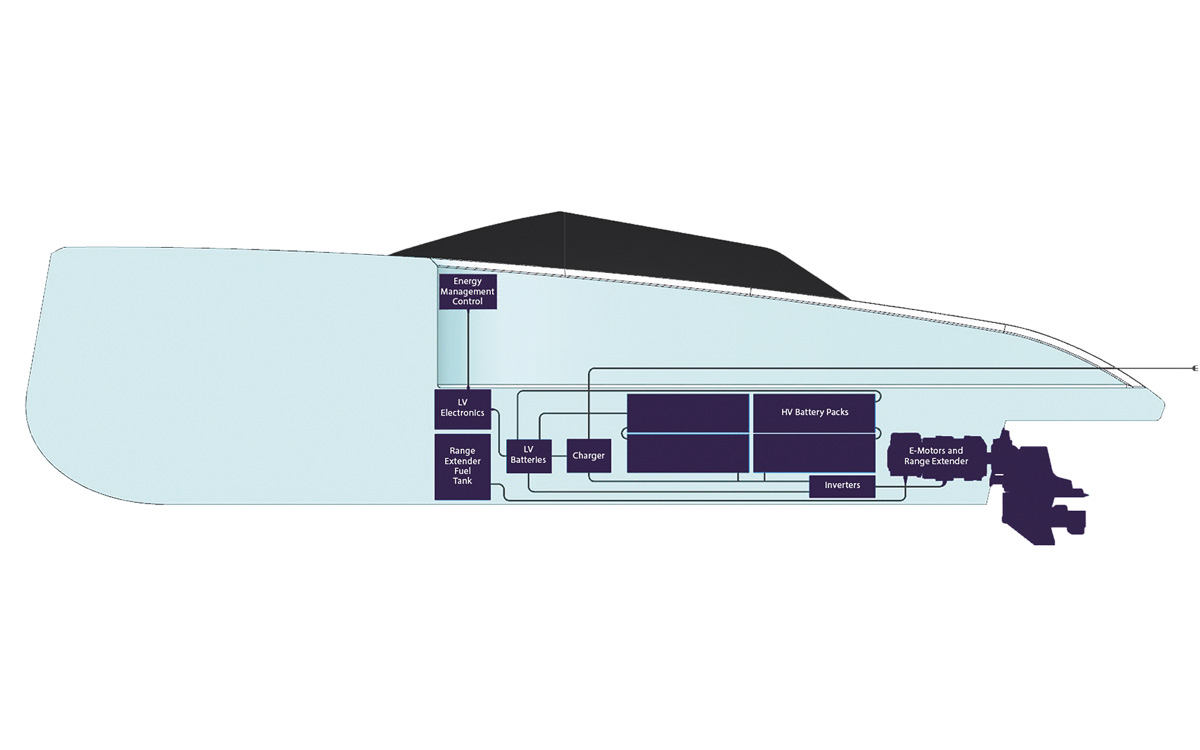
Four 63kWh battery packs store power but are boosted by a small 90kW range extender
The really clever bit is the tiny 90kW (120hp) Wankel rotary petrol engine that sits just in front of the two electric motors. Measuring less than 20in high and weighing a mere 37kg, it is far smaller and contains fewer moving parts than a conventional piston engine, meaning it should be smoother and more reliable as well as more compact.
It also runs much higher exhaust temperatures reducing emissions of CO and NOX emissions as well as being used to heat the fresh hot water tank. Crucially, this has no direct mechanical link to the sterndrive, it is merely used as an electrical generator feeding power to either the electric motors or the battery.
The only downside of these rotary engines is that they tend to be less efficient than their piston powered counterparts and produce a distinctive whine. Controlling all these different elements is a software package and ‘cascade’ transmission system that automatically feeds in the electric motors and range extender using a pneumatically activated dog clutch.
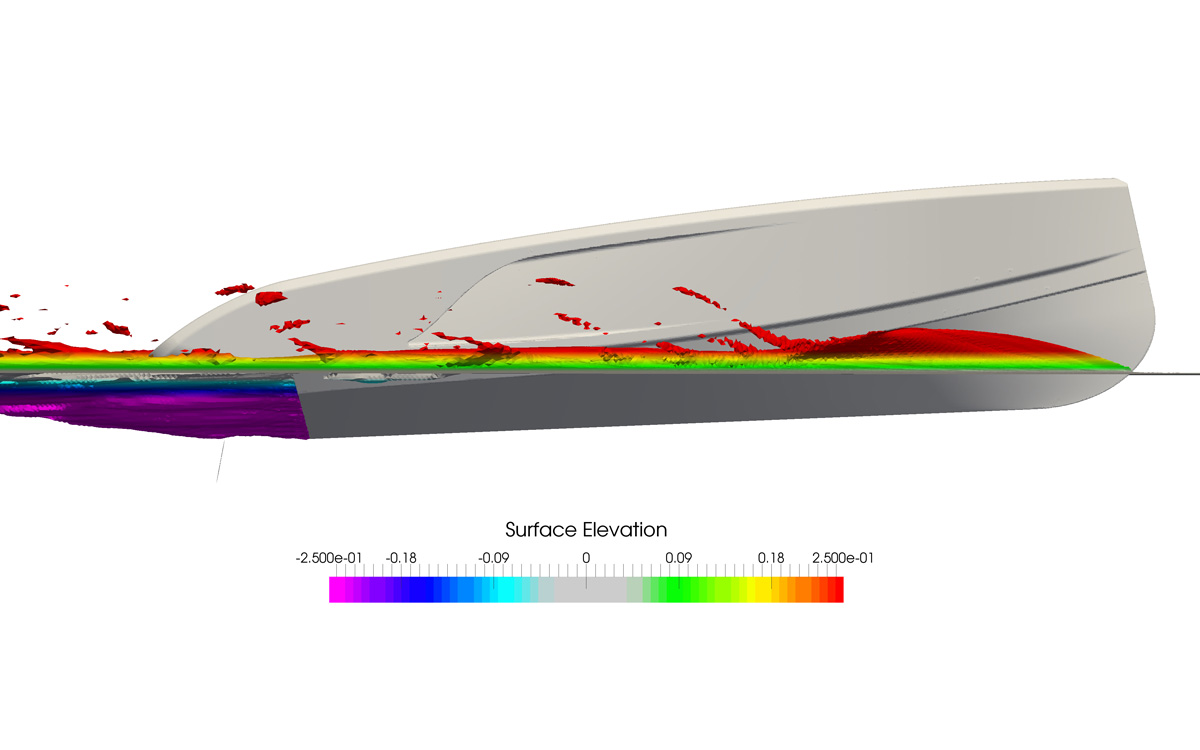
Despite the apparent complexity of this drivetrain, the entire twin electric motor and range extender package is considerably smaller and lighter than a single 370hp Volvo Penta D6 engine (185kg vs 720kg) yet has a maximum power output of 536hp and a maximum torque peak of 1,550nm vs 880nm.
Even when taking into account the considerable extra weight of the batteries and the relatively small fuel capacity of 220 litres, it gives the Furyan F35 the performance to compete with its fossil-fuelled rivals.
Initial estimates suggest the finished boat will weigh around 5.5 tonnes but with so much torque on tap, accelerating onto the plane won’t be an issue.

“Suddenly, buying an electric boat seems like a natural progression to a cleaner future”
Crucially, it is also designed to cruise efficiently at 12 knots, a speed at which many planing boats are struggling to get over the hump. In fact at 12 knots the Furyan F35 can cruise on battery power alone for three hours. It can also cruise at this speed using just the range extender and no battery power, for 12.5 hours.
However, combine the power of both the battery pack and the range extender and the Furyan F35 will perform like a true superboat, scorching to 38 knots flat out.
Using full power will exhaust the battery pack (but not the range extender) in around 50 minutes but cruise at a more typical 20 or 25 knots and you can stretch this to 3 hours or 1hr 25mins respectively – more than enough for most day trips in this size of boat. And of course the range extender will still have sufficient fuel left to get you home at 12 knots if needed.

Prominent axe bow adds presence, extends the waterline and helps it to cut through the waves
Clean tech costs
All this technology doesn’t come cheap, Furyan estimates the F35 will sell for a retail price of £475,000 (ex. VAT), but with competitors like the Princess R35 and Riva Aquariva Super commanding similarly prices but without the benefits of a hybrid powertrain, it is confident boat enthusiasts with a conscience will be willing to pay that sum.
Furyan is now seeking build partners to help manufacture the first of what it hopes will be an entire range of new hybrid powered craft. It will also offer the drivetrain technology to other yards looking for a greener solution for their own craft. We can’t wait to see what the future holds.
First published in the August 2021 issue of MBY.
If you enjoyed this…
Be first to all the latest boats, gadgets, cruising ideas, buying advice and readers’ adventures with a subscription to Motor Boat & Yachting. Available in both print and digital formats, our monthly magazine will be sent directly to your home or device at a substantial discount to the usual cover price. See our latest offers and save at least 30% off the cover price.




